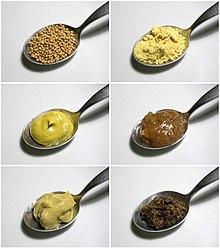
Back NOVA (Lebensmittelklassifikation) German NOVA (nutrition) French Klasifikasi Nova ID ノバ分類法 Japanese Nova-classificatie Dutch NOVA (odżywianie) Polish Classificação Nova Portuguese Clasificarea Nova Romanian

The Nova classification (Portuguese: nova classificação, 'new classification') is a framework for grouping edible substances based on the extent and purpose of food processing applied to them. Researchers at the University of São Paulo, Brazil, proposed the system in 2009.[1]
Nova classifies food into four groups:
- Unprocessed or minimally processed foods
- Processed culinary ingredients
- Processed foods
- Ultra-processed foods[2]
The system has been used worldwide in nutrition and public health research, policy, and guidance as a tool for understanding the health implications of different food products.[3]
- ^ Monteiro, Carlos A. (2009-05-01). "Nutrition and health. The issue is not food, nor nutrients, so much as processing". Public Health Nutrition. 12 (5): 729–731. doi:10.1017/S1368980009005291. ISSN 1475-2727. PMID 19366466. S2CID 42136316.
- ^ Monteiro, Carlos A.; Cannon, Geoffrey; Levy, Renata B; Moubarac, Jean-Claude; Louzada, Maria L. C.; Rauber, Fernanda; Khandpur, Neha; Cediel, Gustavo; Neri, Daniela; Martinez-Steele, Euridice; Baraldi, Larissa G.; Jaime, Patricia C. (2019). "Ultra-processed foods: What they are and how to identify them". Public Health Nutrition. 22 (5): 936–941. doi:10.1017/S1368980018003762. ISSN 1368-9800. PMC 10260459. PMID 30744710.
- ^ Monteiro, Carlos Augusto; Cannon, Geoffrey; Lawrence, Mark; da Costa Louzada, Maria Laura; Machado, Priscila Pereira (2019). Ultra-processed foods, diet quality, and health using the NOVA classification system. Rome: Food and Agriculture Organization of the United Nations. ISBN 978-92-5-131701-3.